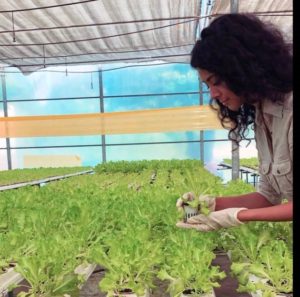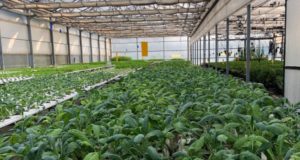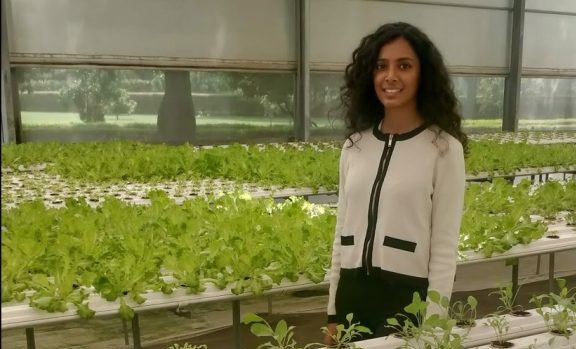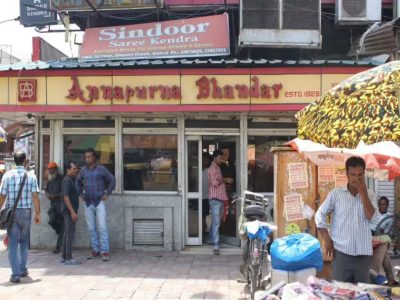Microgreens produced in urban farms have great potential — they can be the cornerstones of affordable, healthy living. Shruti Jain is one of the pioneers of the new trend in farming
The pandemic has been bad news for the economy. But there are some people who have flourished because they saw an opportunity even during these testing times. As someone famously said, “If necessity is the mother of invention then adversity must surely be the father of re-invention.”
Shruti Jain, a 27-year old entrepreneur, is a good example. In the last six months, she has quadrupled the operations of her company Kaze Living. Her strategy is to make chemical-free food accessible to urban consumers. Apart from food items, she also deals in microgreens—the first leaves produced from a seedling of vegetables and herbs that are about 2-3 inch tall.
The company is taking full advantage of hydroponics, a method of growing plants, usually crops, without soil using mineral nutrient solutions in an aqueous solvent. A string of farms have created a credible supply chain, while the business operates online.
It all started last year when she and her friend Anisha visited some hydroponic farms in the foothills of the Himalayas, a few hours’ drive from the capital. They loved what they saw and decided to run a business. Anisha is now her business partner.
They first carried out a survey to understand the customer’s needs, their eating habits, affordable prices, and designed their strategy based on the data so generated. They hired a farm or two and started to cultivate microgreens. In the last few months, her consumers have multiplied, and she is already on the lookout to hire more space for hydroponic farms, which could also be a ventilated room.
Sitting in a coffee shop in Noida, Shruti—a Delhi girl who grew up in Karol Bagh before her family shifted to Noida—explains with much excitement the potential of the microgreens. The vegetables we buy are infested with chemicals and are transported from outside Delhi; half of their shelf life is consumed during transportation. Microgreens offer a healthy, fresh alternative with minimal carbon footprints.

“A microgreen has more than 40 times nutrients (compared to a full grown plant). The flavour is so intense,” she says with emphasis.
While cooking, most of the nutrients get destroyed. Ideally, vegetables should be had raw—especially the microgreens that can be used for garnishing, in salads, juices and smoothies and in a host of other things that don’t require cooking. It’s safe to eat vegetables produced by Kaze Living, as they are a product of soilless farming done strictly without the use of pesticides, fertilisers and chemicals. Also, they have minimal carbon footprint on account of being locally produced and supplied in biodegradable packages without the use of plastics.
She has a host of products that are fairly new to the palate yet cater to Indian tastes. She supplies salad bundles—that’s living plants with roots: microgreens, zucchini, broccoli: the list is long. On their Instagram page, they share a host of recipes—how best to consume microgreens and other products. Health and taste can go hand in hand.
Shruti explains with much joy one of her products: the turmeric pasta. She has collaborated with someone else who supplies the organic pasta for it. She explains her products are not expensive, neither are they exotic, giving the example of ajwain (or bishop’s weed) leaves. Simply said, the situation is akin to old wine in a new bottle.
At some point in the near future, they want to introduce an app so that they can help people lead a healthy life by consuming fresh, healthy food without denting their pockets.
Her supply model is fairly unique and well thought out. It’s not just about a product but about adopting a lifestyle that’s healthy and environmentally sustainable. So her way of supplying products is by inviting subscriptions. The vegetables are supplied on a weekly basis to subscribers that on average cost Rs 2,800 for a family of four. Individual subscriptions are also invited, they cost Rs 2,000, via the website—https://kazeliving.com/en—and also via social networking sites—she explains.
The biggest cost component is that of logistics, therefore the cost of sending food for a single person or a family of four is not significantly different. They also supply food baskets, like a salad basket for six will cost Rs 1,999 and an Italian basket, fairly elaborate and diverse enough to serve eight people, would cost Rs 2,999.

The numbers are growing fast, and she is collaborating with likeminded people to enhance choices for the consumers by encouraging urban farming—harvest fresh, eat fresh. All urban denizens are potential farmers: they can use space inside their house—a balcony, terrace or a room. Shruti is willing to hire such spaces.
“I will help them develop a hydroponic farm, cultivate and buy the produce,” she says, adding, “We want to do it in a big way and make it mainstream.”
The only problem is, compared to south and east India where there are much bigger hydroponic farms, the cost of production in Delhi is more than three times. The reason for it is “fluctuating climate of extremes—whether it’s summer, winter or rainy season,” she points out.
But for sure it’s a good beginning.





